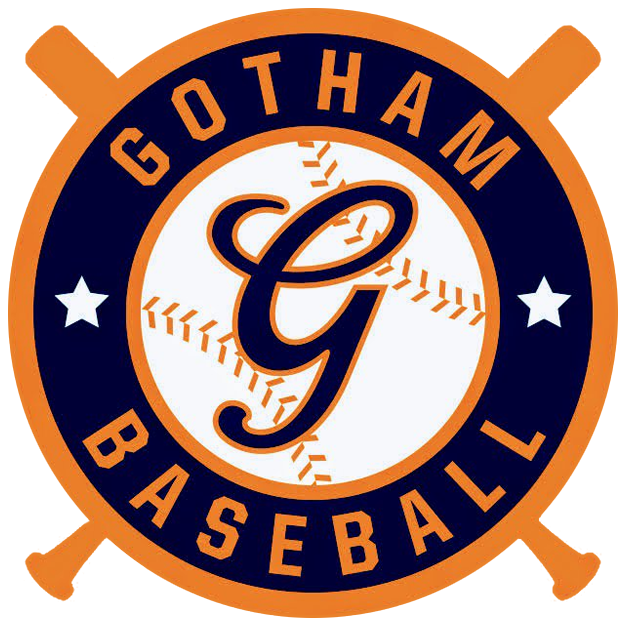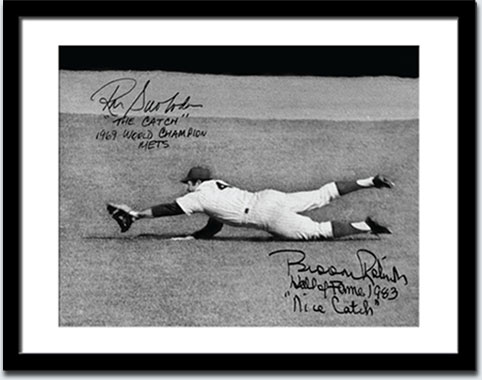While the rest of baseball was continuing its collective laugh at the expansion Mets in the mid-60s, team management was quietly stockpiling talent, and while it didn’t show in the win-loss record when Ron Swoboda made his debut in 1965 at age 20, making the team along with another name you know, and a couple others you probably don’t, it was the start of something special.
“The Mets had lost Paul Blair because they kept him off a protective list, so they took me, Tug McGraw, a pitcher named Jim Bethke and Danny Napolean, who didn’t play too much, and put us on the team out of the Spring,” Swoboda told Gotham Baseball this week via telephone from his home in New Orleans, where he stays in the game as part-time broadcaster for the New Orleans Baby Cakes. “I got my chance, hit a couple of home runs, and Casey Stengel kept me in the lineup. Well, I hit 15 home runs in the first half, until they figured me out with some sliders, and I only hit four in the second half, but 19 was a pretty good year.”
A lot has been made this week of Pete Alonso‘s breaking Darryl Strawberry’s 1983 Mets rookie home run record, but it was Swoboda’s 19 in 1965 that Strawberry had bested. A nice tie to the past for the current Mets team that could use a Miracle or two. Swoboda likes what he sees in Alonso.
“I got to meet him this spring, spend some time with him,” added Swoboda. “Solid preparation, just swings right through the ball, attacks the ball, none of this ‘launch angle apex’ stuff. Get a good pitch and hit it.”
 While Swoboda wouldn’t say that Alonso reminds him of himself as a rookie, Mets fans of a certain age may see the parallels: and offense-first, strong right-handed hitter breaking out in a strong rookie season. And while expectations were lower for the ’65 squad than this year’s team, Swoboda was part of the young core that would go on to that historic title four years later, with the slugger playing big roles with his bat (.400/.438/.467 in four ’69 World Series games) and, famously and surprisingly, with his glove (see: The Catch).
While Swoboda wouldn’t say that Alonso reminds him of himself as a rookie, Mets fans of a certain age may see the parallels: and offense-first, strong right-handed hitter breaking out in a strong rookie season. And while expectations were lower for the ’65 squad than this year’s team, Swoboda was part of the young core that would go on to that historic title four years later, with the slugger playing big roles with his bat (.400/.438/.467 in four ’69 World Series games) and, famously and surprisingly, with his glove (see: The Catch).
Swoboda’s diving grab in Game 4 of the World Series was as big a play as any in that Fall Classic (among a multitude of Mets’ web gems), and arguably in the history of the postseason. And while it has outshone any other accomplishments by the nine-year major leaguer, Swoboda is proud of the moment, especially because of how he got there.
“It was hard work,” said Swoboda, who had the reputation as a poor outfielder, a characterization to which he readily admits. “But I had Eddie Yost hit me ball after ball–line drives and hard grounders at game speed, so I could check the angles, learn when to make the play, when to let it bounce. The culmination of putting in that work was that play.”
The ’69 Mets’ late-season push, which erased a double-digit Cubs Eastern Division advantage, wasn’t completely out of the blue to the team, especially Swoboda.
“We went into late May around .500, I think,” he remembered. “We were coming off 73 wins [in 1968], so that would have been an improvement. But then we reeled off 11 wins against the California teams, first at Shea, then out there, and then we knew maybe we had something. General manager Johnny Murphy went out and got Donn Clendenon, and he became part of the Gil Hodges strict platoon, a perfect fit. The Cubs stayed ahead, and for awhile we thought, ‘We’re going to have this great year and end up the Pumpkin,’ but then we kept winning three of four, the Cubs fell apart—thanks Leo Durocher—and there we were, beating the Braves of Henry Aaron, Rico Carty, Orlando Cepeda, and getting to the World Series.”
 Swoboda is one of several Mets and others who have commemorated the 50th anniversary of that season with books; his is Here’s the Catch: A Memoir of the Miracle Mets and More (St. Martin’s Press, 228 pps., $27.99), chronicling the season from the perspective of one of the Series’ key heroes, with a play up there in the annals of the all-time greats, never to be forgotten by baseball fans.
Swoboda is one of several Mets and others who have commemorated the 50th anniversary of that season with books; his is Here’s the Catch: A Memoir of the Miracle Mets and More (St. Martin’s Press, 228 pps., $27.99), chronicling the season from the perspective of one of the Series’ key heroes, with a play up there in the annals of the all-time greats, never to be forgotten by baseball fans.
“It’s just to tell the story from my perspective, how I think and feel,” he explains. “An average guy who had his golden moment. If you keep working at it, good things can happen. If I’m identified by that single play, well there are plenty of guys who had careers like mine who don’t have that, 50 years later.”

